Non-Autoregressive TTS with Explicit Duration Modelling for Low-Resource Highly Expressive Speech
Jun 24, 2021Raahil Shah, Kamil Pokora, Abdelhamid Ezzerg, Viacheslav Klimkov, Goeric Huybrechts, Bartosz Putrycz, Daniel Korzekwa, Thomas Merritt
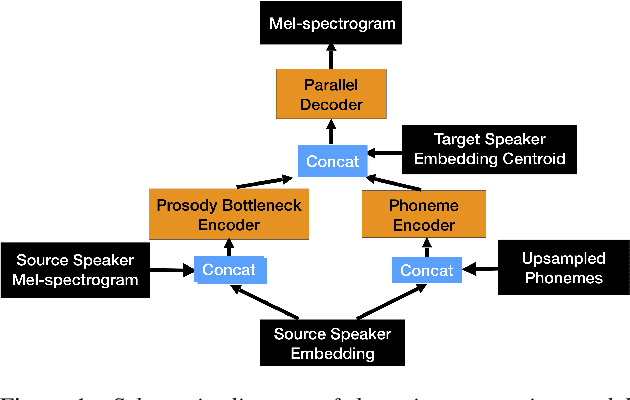
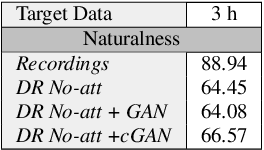
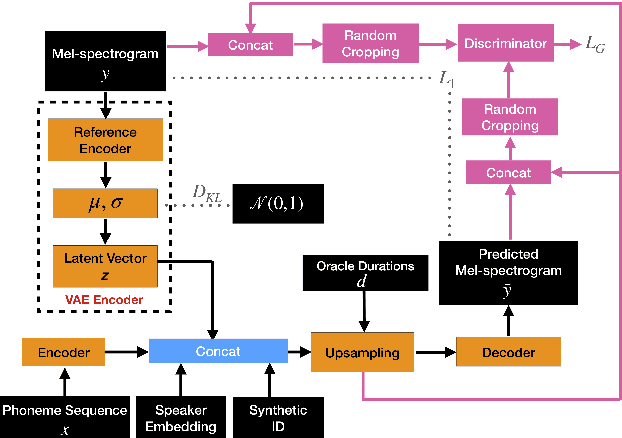
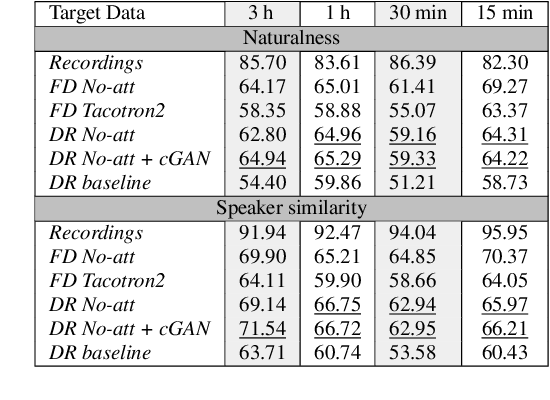
Whilst recent neural text-to-speech (TTS) approaches produce high-quality speech, they typically require a large amount of recordings from the target speaker. In previous work, a 3-step method was proposed to generate high-quality TTS while greatly reducing the amount of data required for training. However, we have observed a ceiling effect in the level of naturalness achievable for highly expressive voices when using this approach. In this paper, we present a method for building highly expressive TTS voices with as little as 15 minutes of speech data from the target speaker. Compared to the current state-of-the-art approach, our proposed improvements close the gap to recordings by 23.3% for naturalness of speech and by 16.3% for speaker similarity. Further, we match the naturalness and speaker similarity of a Tacotron2-based full-data (~10 hours) model using only 15 minutes of target speaker data, whereas with 30 minutes or more, we significantly outperform it. The following improvements are proposed: 1) changing from an autoregressive, attention-based TTS model to a non-autoregressive model replacing attention with an external duration model and 2) an additional Conditional Generative Adversarial Network (cGAN) based fine-tuning step.
Improving the expressiveness of neural vocoding with non-affine Normalizing Flows
Jun 16, 2021Adam Gabryś, Yunlong Jiao, Viacheslav Klimkov, Daniel Korzekwa, Roberto Barra-Chicote
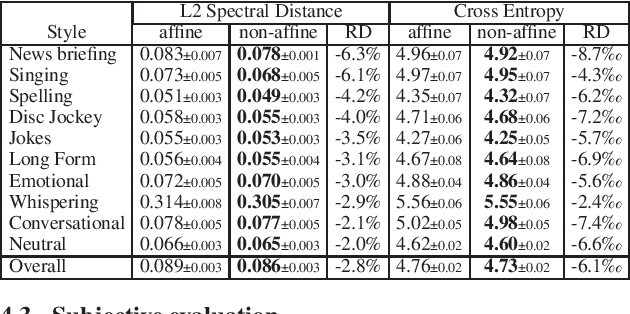
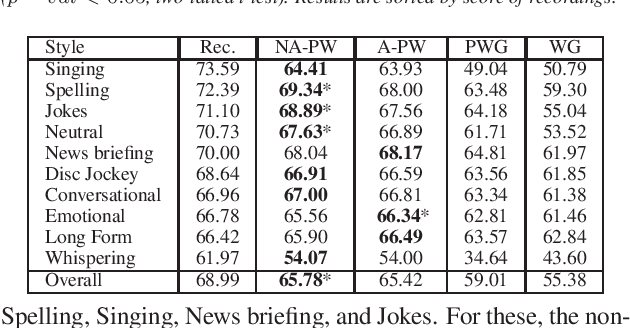
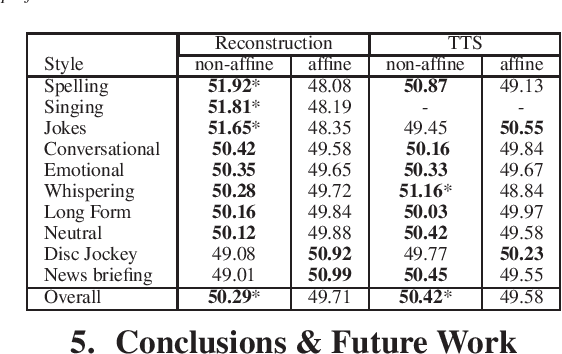
This paper proposes a general enhancement to the Normalizing Flows (NF) used in neural vocoding. As a case study, we improve expressive speech vocoding with a revamped Parallel Wavenet (PW). Specifically, we propose to extend the affine transformation of PW to the more expressive invertible non-affine function. The greater expressiveness of the improved PW leads to better-perceived signal quality and naturalness in the waveform reconstruction and text-to-speech (TTS) tasks. We evaluate the model across different speaking styles on a multi-speaker, multi-lingual dataset. In the waveform reconstruction task, the proposed model closes the naturalness and signal quality gap from the original PW to recordings by $10\%$, and from other state-of-the-art neural vocoding systems by more than $60\%$. We also demonstrate improvements in objective metrics on the evaluation test set with L2 Spectral Distance and Cross-Entropy reduced by $3\%$ and $6\unicode{x2030}$ comparing to the affine PW. Furthermore, we extend the probability density distillation procedure proposed by the original PW paper, so that it works with any non-affine invertible and differentiable function.
Weakly-supervised word-level pronunciation error detection in non-native English speech
Jun 07, 2021Daniel Korzekwa, Jaime Lorenzo-Trueba, Thomas Drugman, Shira Calamaro, Bozena Kostek
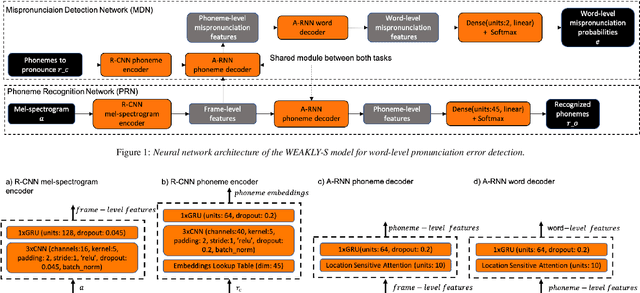
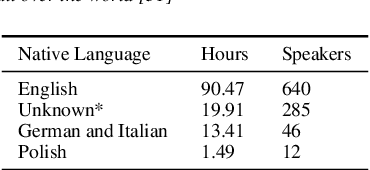
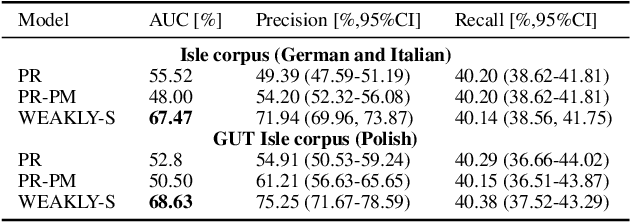

We propose a weakly-supervised model for word-level mispronunciation detection in non-native (L2) English speech. To train this model, phonetically transcribed L2 speech is not required and we only need to mark mispronounced words. The lack of phonetic transcriptions for L2 speech means that the model has to learn only from a weak signal of word-level mispronunciations. Because of that and due to the limited amount of mispronounced L2 speech, the model is more likely to overfit. To limit this risk, we train it in a multi-task setup. In the first task, we estimate the probabilities of word-level mispronunciation. For the second task, we use a phoneme recognizer trained on phonetically transcribed L1 speech that is easily accessible and can be automatically annotated. Compared to state-of-the-art approaches, we improve the accuracy of detecting word-level pronunciation errors in AUC metric by 30% on the GUT Isle Corpus of L2 Polish speakers, and by 21.5% on the Isle Corpus of L2 German and Italian speakers.
Universal Neural Vocoding with Parallel WaveNet
Feb 15, 2021Yunlong Jiao, Adam Gabrys, Georgi Tinchev, Bartosz Putrycz, Daniel Korzekwa, Viacheslav Klimkov
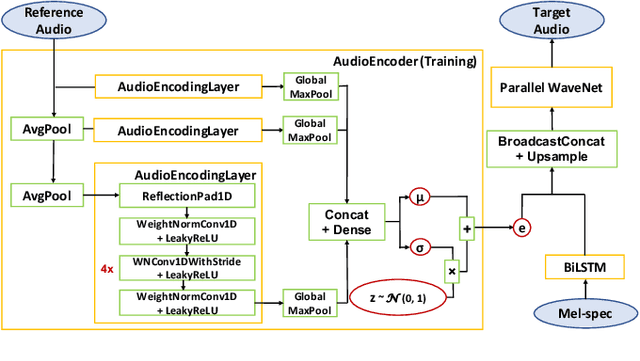

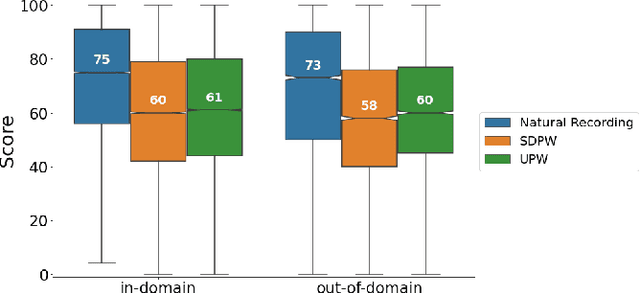
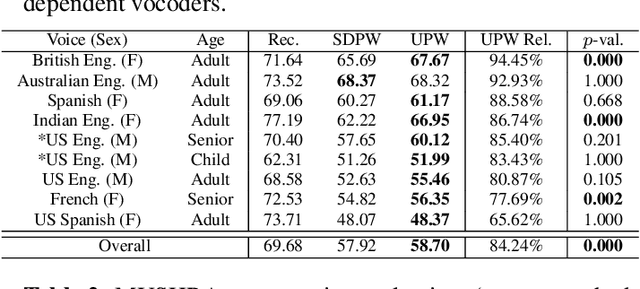
We present a universal neural vocoder based on Parallel WaveNet, with an additional conditioning network called Audio Encoder. Our universal vocoder offers real-time high-quality speech synthesis on a wide range of use cases. We tested it on 43 internal speakers of diverse age and gender, speaking 20 languages in 17 unique styles, of which 7 voices and 5 styles were not exposed during training. We show that the proposed universal vocoder significantly outperforms speaker-dependent vocoders overall. We also show that the proposed vocoder outperforms several existing neural vocoder architectures in terms of naturalness and universality. These findings are consistent when we further test on more than 300 open-source voices.
Mispronunciation Detection in Non-native (L2) English with Uncertainty Modeling
Feb 08, 2021Daniel Korzekwa, Jaime Lorenzo-Trueba, Szymon Zaporowski, Shira Calamaro, Thomas Drugman, Bozena Kostek

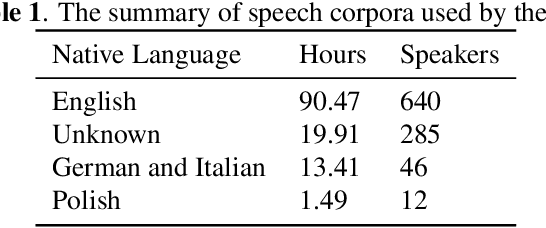

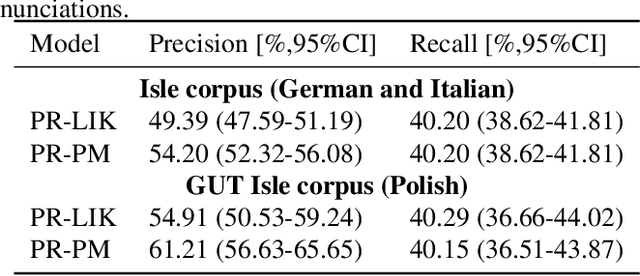
A common approach to the automatic detection of mispronunciation in language learning is to recognize the phonemes produced by a student and compare it to the expected pronunciation of a native speaker. This approach makes two simplifying assumptions: a) phonemes can be recognized from speech with high accuracy, b) there is a single correct way for a sentence to be pronounced. These assumptions do not always hold, which can result in a significant amount of false mispronunciation alarms. We propose a novel approach to overcome this problem based on two principles: a) taking into account uncertainty in the automatic phoneme recognition step, b) accounting for the fact that there may be multiple valid pronunciations. We evaluate the model on non-native (L2) English speech of German, Italian and Polish speakers, where it is shown to increase the precision of detecting mispronunciations by up to 18% (relative) compared to the common approach.
Detection of Lexical Stress Errors in Non-native (L2) English with Data Augmentation and Attention
Dec 29, 2020Daniel Korzekwa, Roberto Barra-Chicote, Szymon Zaporowski, Grzegorz Beringer, Jaime Lorenzo-Trueba, Alicja Serafinowicz, Jasha Droppo, Thomas Drugman, Bozena Kostek

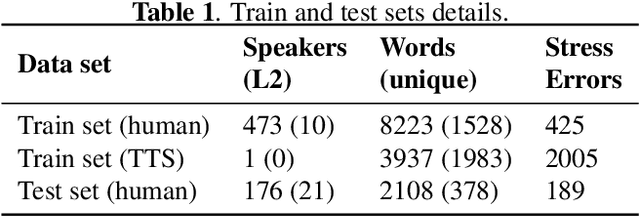
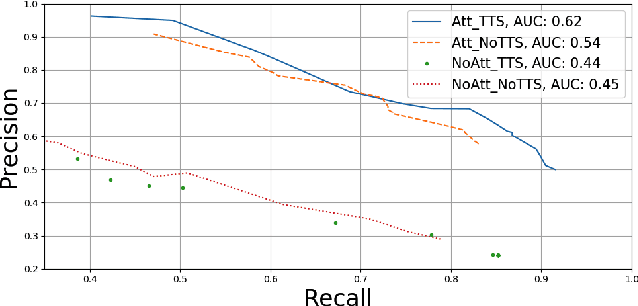

This paper describes two novel complementary techniques that improve the detection of lexical stress errors in non-native (L2) English speech: attention-based feature extraction and data augmentation based on Neural Text-To-Speech (TTS). In a classical approach, audio features are usually extracted from fixed regions of speech such as syllable nucleus. We propose an attention-based deep learning model that automatically derives optimal syllable-level representation from frame-level and phoneme-level audio features. Training this model is challenging because of the limited amount of incorrect stress patterns. To solve this problem, we propose to augment the training set with incorrectly stressed words generated with Neural TTS. Combining both techniques achieves 94.8\% precision and 49.2\% recall for the detection of incorrectly stressed words in L2 English speech of Slavic speakers.
Interpretable Deep Learning Model for the Detection and Reconstruction of Dysarthric Speech
Jul 10, 2019Daniel Korzekwa, Roberto Barra-Chicote, Bozena Kostek, Thomas Drugman, Mateusz Lajszczak
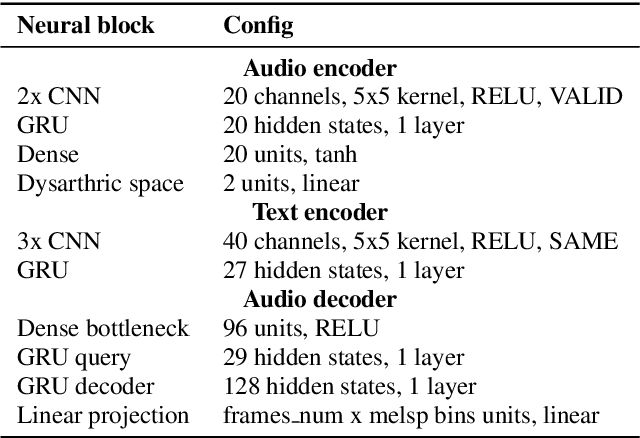
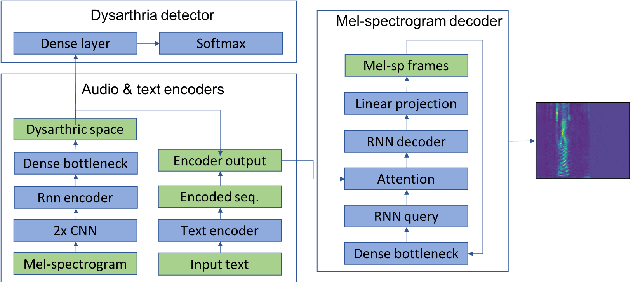
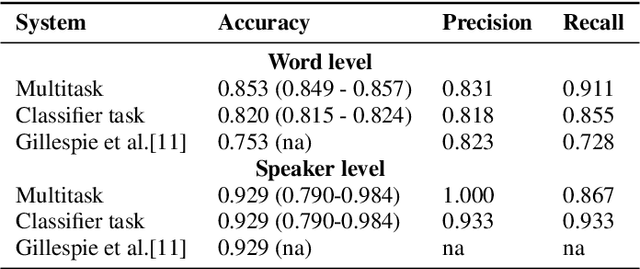
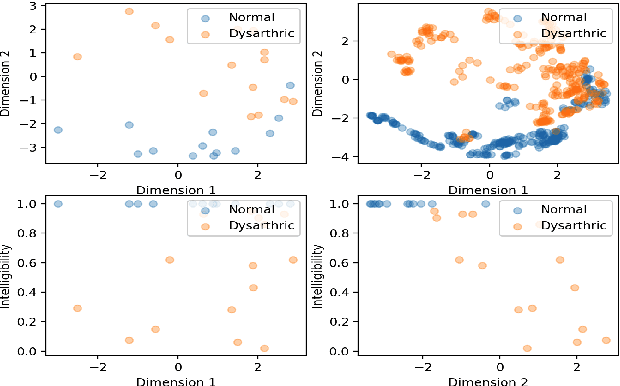
This paper proposed a novel approach for the detection and reconstruction of dysarthric speech. The encoder-decoder model factorizes speech into a low-dimensional latent space and encoding of the input text. We showed that the latent space conveys interpretable characteristics of dysarthria, such as intelligibility and fluency of speech. MUSHRA perceptual test demonstrated that the adaptation of the latent space let the model generate speech of improved fluency. The multi-task supervised approach for predicting both the probability of dysarthric speech and the mel-spectrogram helps improve the detection of dysarthria with higher accuracy. This is thanks to a low-dimensional latent space of the auto-encoder as opposed to directly predicting dysarthria from a highly dimensional mel-spectrogram.
 Add to Chrome
Add to Chrome Add to Firefox
Add to Firefox Add to Edge
Add to Edge